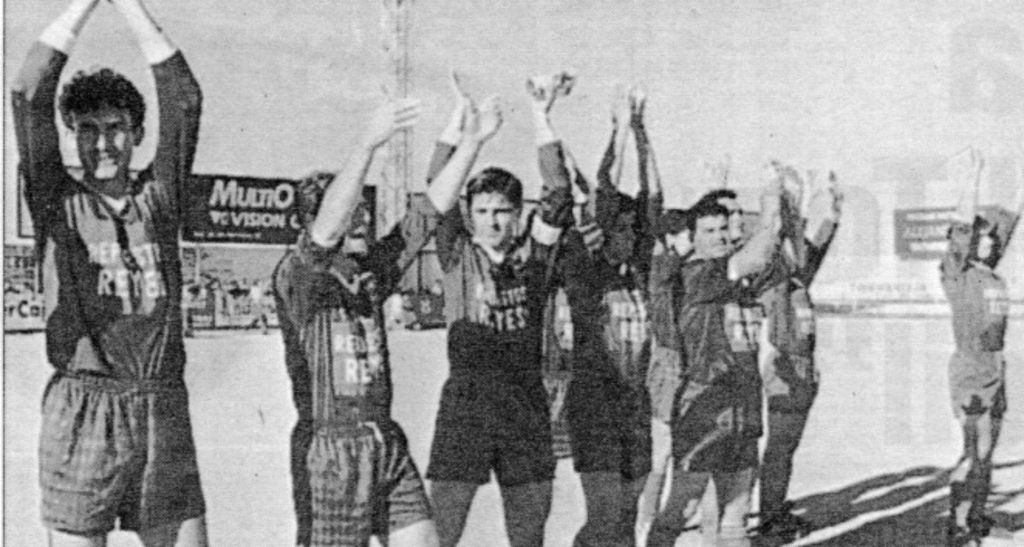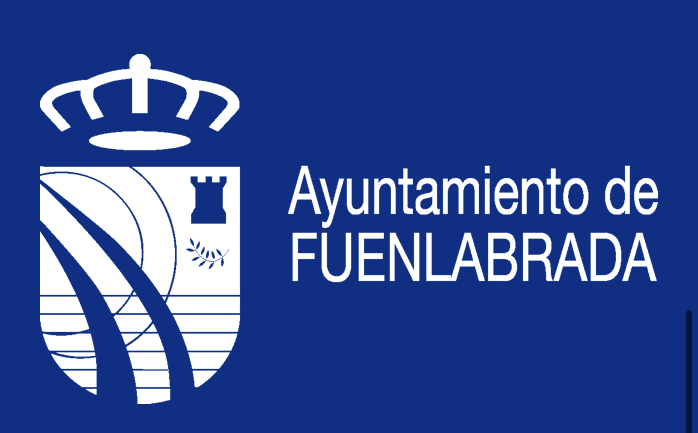6 November 2025
The Birth of CF Fuenlabrada
Welcome back to FluentFutbol! We are excited to be launching a special series focusing on our official partners: CF Fuenlabrada and CF Intercity, both participating in the Segunda Federación next season! We hope that you find this interesting, and this helps your learning of both the Spanish language and footballing culture.
We begin with the birth of CF Fuenlabrada…
We thank CF Fuenlabrada for providing us with the below article which can be accessed via our link.
Spanish Article:
Link: https://www.cffuenlabrada.es/es/pagina/ver/1001-historia.html
Los orígenes de la creación del Club de Fútbol Fuenlabrada nos remontan al año 1.975. Por entonces existían dos clubes emblemáticos y representativos de la localidad, C.D. San Esteban y la Agrupación Deportiva Fuenlabrada, que se había creado poco antes. Ambos convivían en armonía y eran apoyados por el ayuntamiento de la localidad de forma igualitaria. La idea surgió del por entonces alcalde de la localidad, Regino Beneítez, que sugirió a los directivos de ambos clubes la fusión para aunar esfuerzos, recibir una mayor subvención municipal y crear un único club, representativo de una ciudad que ya empezaba a dar síntomas de crecimiento.
De esa voluntad, y del acuerdo al que llegaron ambas directivas, el 5 de junio de 1.975 nació lo que es actualmente el Club de Fútbol Fuenlabrada. Había muchas cosas que dilucidar hasta el momento. La más urgente, elegir una junta directiva, tras lo cual se decidió que fuera Francisco Polidura el primer presidente de la nueva entidad. El orden de los socios se realizó por sorteo entre los fundadores. También era importante elegir el color de una vestimenta que diera unas claras señas de identidad al club. La coincidencia en las segundas equipaciones, de color azul, hizo que fuera esta tonalidad la elegida para representar al club. Fueron designados, como primeros delegados para el club, Francisco Pulido y Miguel Zaragoza. Un papel primordial en el nacimiento del nuevo club lo jugó Ramón García Pajuelo, que fue designado secretario de la entidad y que aún hoy continúa ligado al club, como delegado del mismo.
Ya estaba el equipo formado, ahora había que inscribirlo en competición. Se decidió jugar en el campo de fútbol existente por entonces junto al cementerio, lo que es en la actualidad La Aldehuela. No había vallas que delimitasen el campo pero, poco a poco, con la ayuda de socios, aficionados y voluntarios, y con la aportación de la materia prima por parte del ayuntamiento, se fue tapiando el campo, lo que permitió que el club, gracias a sus méritos deportivos, tuviera la opción de ir subiendo de categoría en años sucesivos.

Reference Translation:
The origins of the creation of CF Fuenlabrada dates back to the year 1975. Back then, two emblematic and representative clubs existed in the region: C.D. San Esteban and Agrupación Deportiva Fuenlabrada, which was founded shortly before. Both coexisted in harmony and were supported by the town council in an equal way. The idea came from the then-mayor of the town, Region Beneítez, who suggested to the directors of both clubs a merger to join forces, receiving greater municipal funding and creating a single club, representing a city that was already beginning to show signs of growth.
From this desire, and from the agreement reached between the two boards, what is now CF Fuenlabrada was officially founded on June 6, 1975. There were many things to resolve at that point. The most urgent was to elect the board of directors, after which it was decided that Francisco Polidura would be the new entity’s (club) first president. Membership order was determined by a draw amongst the founders. It was also important to choose the colour of the kit which gave a clear sense of identity to the club. A coincidence in the away kits (of both former teams), of blue colour, made that colour to be selected to represent the club. Francisco Pulido and Miguel Zaragoza were appointed as the club’s first delegates. A crucial role in the birth of the new club was played by Ramón García Pajuelo, who was appointed secretary of the entity and still remains involved with the club today as a delegate.
With the team formed, it now had to be registered in a competition.It was decided to play at the existing pitch next to the cemetery, which is now La Aldehuela. There were no fences to mark out the pitch but bit by bit, with the help of members, fans and volunteers, and with contribution of materials from the city council, the ground was built, which allowed the club, thanks to its sporting merits, to have the chance to rise through the divisions in successive years.
10 Useful Words
- La localidad- the town/locality
- El alcalde- the mayor
- La subvención- subsidy/funding/grant
- Crecimiento- growth
- Presidente- president
- Sorteo- draw
- Tonalidad- shade/tone (of colour)
- Inscribir- to register/sign-up for
- Papel- role
- Voluntario- volunteer
5 Useful Phrases
- Aunar esfuerzos- to join forces
- Nos remontan al año (insert year)- takes us back to the year
- Llegar un acuerdo- to reach an agreement
- Se decidió que- it was decided that
- Dar señas de identidad- to provide a sense of identity
Football Specific Phrases/Words
- Junta directiva- board of directors
- Delegados- (club) delegates/officials
- Segunda equipación- away kit
- Campo de fútbol- football pitch
- Aficionado- fan/supporter
- Socio- member
Cultural Context
Especially relevant for smaller, more local teams, the involvement of the local council to provide funding and to aid the running of football clubs in Spain is extremely common, even in the present day. In fact if you visit the website of our partner CF Fuenlabrada (https://www.cffuenlabrada.es/), you will still see the city council (Ayuntamiento de Fuenlabrada) listed at the bottom.

The merger was also a classic example of a football club being used to represent a region- also common not only in Spain but across the world. The merger in the case of Fuenlabrada created a single, unified club to represent the entire town. In the wider context, many clubs such as Athletic Club are deeply attached to their local communities- with Athletic Club being unique in that it only has Basque players from its youth teams up to the first team!
In most clubs in Spain even until the present day, members (socios) are highly valued and often own a share of the club. This is seen in the case of Fuenlabrada with members both playing a role in founding the club but also helping build the stadium. One might think that this might only be the case for smaller teams in Spain, but that is not the case. Even Real Madrid, one of the greatest clubs in world football, is not owned by an ‘owner’ like many teams in the Premier League but by its socios (members), with an elected president in Florentino Perez.
Virtual Tour
To explore Fuenlabrada further (both the city and the football team), here are some Google Maps links to take you on a digital tour of places related to this article!
Ayuntamiento de Fuenlabrada:
https://maps.app.goo.gl/tYmbo5sdScJxn9MB9?g_st=ic
The current Fuenlabrada City Hall, opened in 1998, and is where the current city council operates. Please note it is not the original building mentioned in the article.
Espacio Joven La Plaza:
https://maps.app.goo.gl/YKCAhb6avx2DLGxBA?g_st=ic
This is the building of the former city hall, built in 1878, and is the where the city council would have been situated during the time of the article. You can still see that this was formerly the city hall with the word ‘ayuntamiento’- city hall- engraved on the building. This building has now been repurposed to be a youth centre, offering exhibitions as well as youth services.
Campo de Fútbol La Aldehuela
https://maps.app.goo.gl/hhcZ6RmgD5jzj8Jv5?g_st=ic
This is the ground mentioned above in the article, being CF Fuenlabrada’s home ground from 1975 to 2011. The first team has now moved to play at the more modern Estadio Fernando Torres. The stadium has since been repurposed into a sports complex with multiple artificial pitches, hosting CF Fuenlabrada’s academy teams.
Thank you for reading and please do join us again in our next article where we will keep on exploring CF Fuenlabrada’s history!